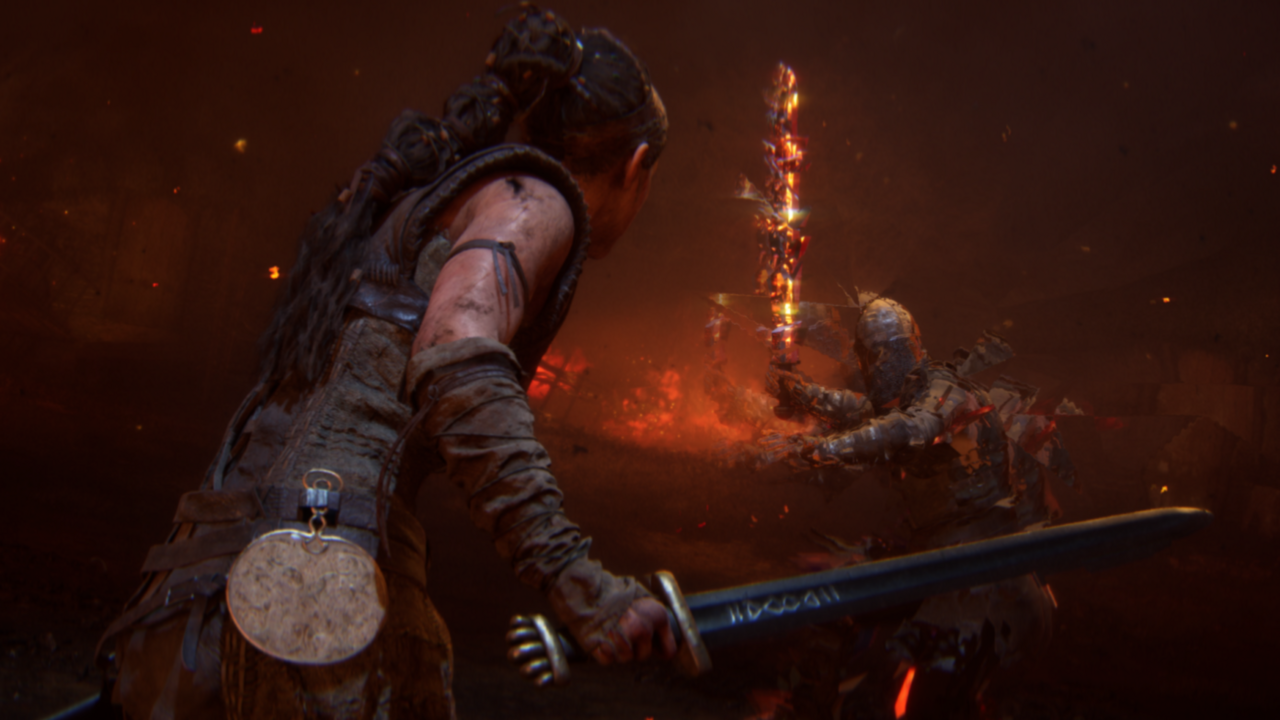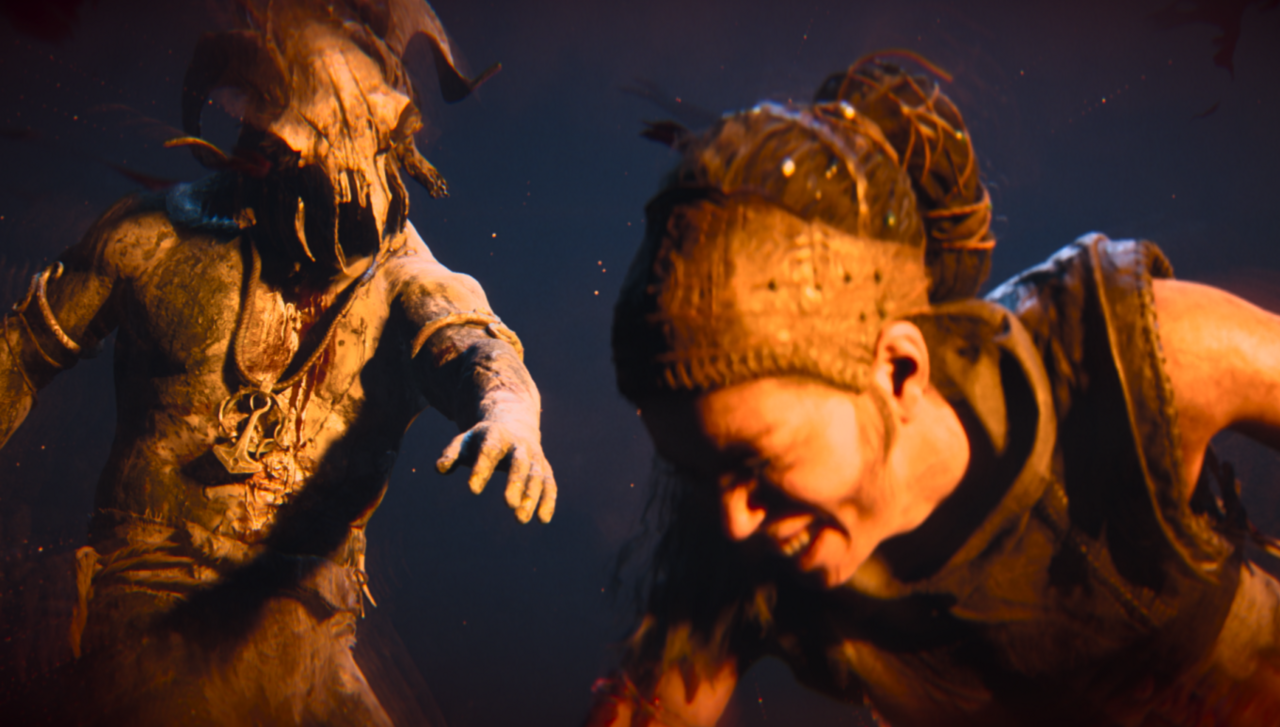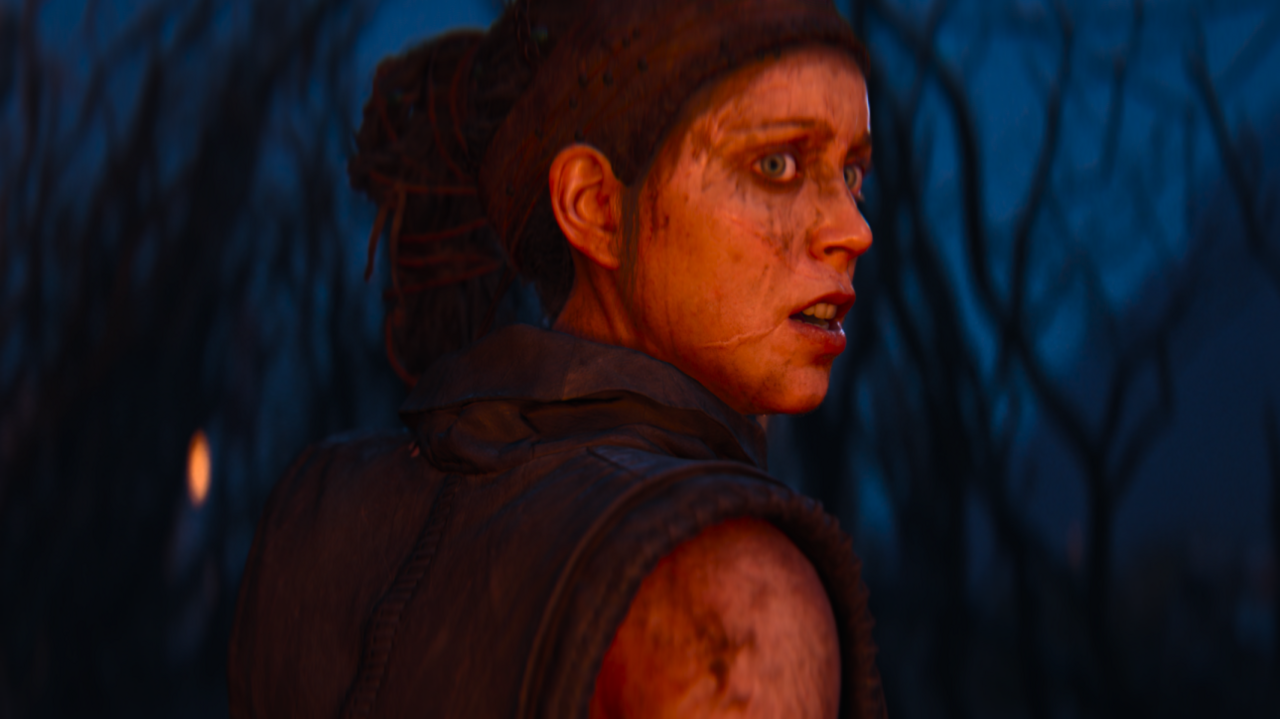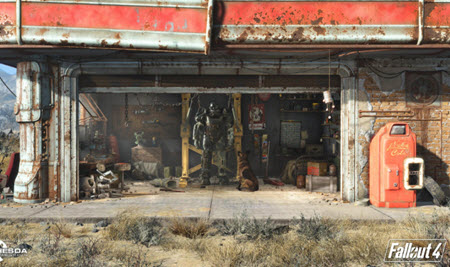Senua的传奇:Hellblade 2的战斗看起来很漂亮,感觉很糟糕
发布: 更新时间:2024-04-05 08:52:17
About halfway through my conversation with Dom Matthews, head ninja at Ninja Theory, and Melina Juergens, lead actor for Senua and video editor at Ninja Theory, I broke. I had to ask why the format of
Senua's Saga: Hellblade II
title is the inverse of the first game,
Hellblade: Senua's Sacrifice
. Why is the "Senua" part first? It's a small thing, sure, but I had to know if there was anything to it beyond the studio's secret machinations to confuse me. Juergens laughed and admitted that the change trips her up too (which made me feel a whole lot better), while Matthews surprised me with a serious answer to my otherwise silly question.
"We wanted to recognize the fact that the focus is on Senua," Matthews told me. "It's Senua's saga, it's Senua's story--we wanted that to be front and center. And it's an interesting thing, because, [in language], you can just accept that a [certain] word means something and you can't break it down and go, 'What does that mean?' That's 'Hellblade' now--Hellblade means something. It means something, but not in the building blocks of what it is--it's [just] Hellblade. And that's still important to the title of the game but we just wanted to put that focus on [Hellblade II] being Senua's saga. It's about her, it's about her journey. It's right that that comes first."
That journey feels like it's going to be fantastic. I played about 40 minutes of Hellblade II during a visit to Ninja Theory's studio in Cambridge, UK, and I was enthralled. Unlike the first game, which saw Senua, a Pict warrior with psychosis, struggling to fight her way through Helheim, Hellblade II grounds Senua in Iceland. From what I saw, this change pulls the focus away from the tantalizing mythology brought to life through Senua's delusions in the first game, and instead centers her conflicts in a more recognizable world. In response, Senua's movements in combat look and feel more realistic, prioritizing the heft of her sword, felt through her tired desperation during lengthier fights. Whenever Senua clashes swords with someone, Hellblade II makes it feel tense, as if life itself is challenging Senua to earn her right to exist in this world.
This was most evident in the final moments of the preview, which saw Senua attempting to free a prisoner from a group of Vikings. Her actions sparked a prison break, engulfing the area in smoke, blood, and screams. I had to guide Senua through an onslaught of foes, some wielding traditional weapons like axes and swords while others used torches to spew fire. Much like the first game, Senua doesn't face more than one enemy at a time, so huge battles are structured as a series of back-to-back duels. You'd think a decision like this would make combat easier, but nothing could be further from the truth. Hellblade II is hard. It's not as tricky to grasp as more action-oriented games, but enemies are quick to take advantage of your mistakes--parrying weak strikes and immediately counter-attacking, for example, or using wide-sweeping attacks that are difficult to dodge without precise timing.

"The reason why it's one-on-one is because we wanted Senua to feel vulnerable," Senua's Saga: Hellblade II combat director, Benoit Macon, said. Even though there's only ever one target, it often feels like Senua is surrounded as the camera zooms in for a very close over-the-shoulder perspective and the whispering advice of the psychosis-created Furies bombard Senua. The music contributes to this as well, building in volume and rhythm the longer a fight plays out, until the reverberating heartbeat of the background vocals swell with the killing blow--it's almost like the music itself is encroaching on you, only relieving the pressure once the fight is over. I could feel my heart racing during moments where Senua would push past an attacker, momentarily putting Senua's opponent into her periphery where you can still kind of see them, but there's that brief moment of terror where you're frantically turning around to get the opponent back into full view.
Combat is also made more exciting with new abilities for Senua. My favorite comes from an especially poignant moment in the preview when Senua was reminded of her childhood home, sending her mind back to that space. There, she remembered and recovered a small mirror which she used to focus as a young girl. Coming back to the present, Senua unlocked the ability to use the mirror to focus, temporarily slowing enemies long enough to land a full combo of attacks. Senua has to charge the move, meaning it never became a crutch during the preview, but I can't see myself beating Hellblade II without using it. Unleashing focus creates this beautiful explosion of reflective shards and shimmering runes that then encase an enemy, thematically insinuating that Senua is giving the target her complete attention much in the same way she did her reflection as a child. In that moment, the enemy slows and Senua's slashes chip away at their shining prison, typically culminating in Senua overcoming the enemy with a burst of strength and a primal scream. It's beautiful. It's badass. It adds meaningful narrative context to battles while also making the tougher ones far more approachable.

The mirror is just one aspect of the game that keeps Hellblade II firmly in the genre of dark fantasy. Senua still must complete environmental puzzles to progress in the world, scouring the immediate area for landmarks that remind her of the shape of certain runes to remove magical obstacles or noticing patterns in the mountainside that hint at secret passages. My favorite are the faces--protrusion of rock that Senua's psychosis convinces her are a human face. If she approaches them and focuses on the face, she surmises her mind is painting a pattern that isn't actually there, revealing a tunnel through which she can proceed.
This aspect of the game isn't as challenging as the combat, instead providing a brief respite to catch your breath and soak in the tantalizing atmosphere. I didn't find these moments as rewarding as the combat, as the riddles I solved seemed fairly simple and straightforward, while the dance-like puzzles of each fight pushed me to think quickly and strategically in the heat of the moment. But I also think Hellblade II needs those quiet moments, if only to once again tighten the tension as the game leads to its next duel.

In addition, these quieter moments provide opportunities for Senua to reflect and check in with her allies, whether they're one of the new NPCs or the Furies. And of everything I saw, that's what excited me the most. The Furies felt more like adversarial allies in the first game, but now they feel more akin to true companions. There's clearly been a shift in power between Senua and the psychosis-driven voices in her head--one that builds on the final moments of the first game. I'm eager to see how that dynamic might change or evolve in Hellblade II.
"[Senua has] come to terms with [the fact] that her lover, Dillion, is gone," Juergens told me. "She's accepted the past. She's made peace with her past. In the new game, she's still hearing voices and seeing visions, but she's more in control of them and uses them more to drive her forward rather than being afraid of them, if that makes sense. She also meets new people along the way. We've got a cast now for the new game. There are people that appreciate her perspective, her unique perspective on the world, and there are other people who reject it. I think she comes across a little bit more confident now. When I was acting, I made sure that for the second game, my posture is a little bit more confident and upright because she is a leader in the second game. She's not a victim of psychosis anymore. She hasn't overcome it, but she's in control of it."
Truly, May cannot come soon enough. I can't remember the last time a game preview left me so excited to dive into the full experience. Senua's Saga: Hellblade II is set to launch for Xbox Series X|S and PC on May 21 and will be available day one on Xbox Game Pass.
- 逆向WeChat(七) 2024-10-08
- 蚂蚁庄园每日答题:10月8日二十四节气中第一个带“寒”字的节气是什么? 2024-10-08
- 再添100万!《黑神话:悟空》预估销量突破2100万份! 2024-10-08
- 崩坏星穹铁道新五星角色灵砂养成方法 2024-10-07
- 明日方舟近卫维娜维多利亚获取方法 2024-10-07
- 《小丑2》北美票房表现低迷 首周末成绩不尽人意 2024-10-07
- 如何将机器学习模型集成到Web应用程序中 2024-10-06
- 《界之轨迹》发售官方发《黎轨2》剧情帮玩家回忆! 2024-10-06





























